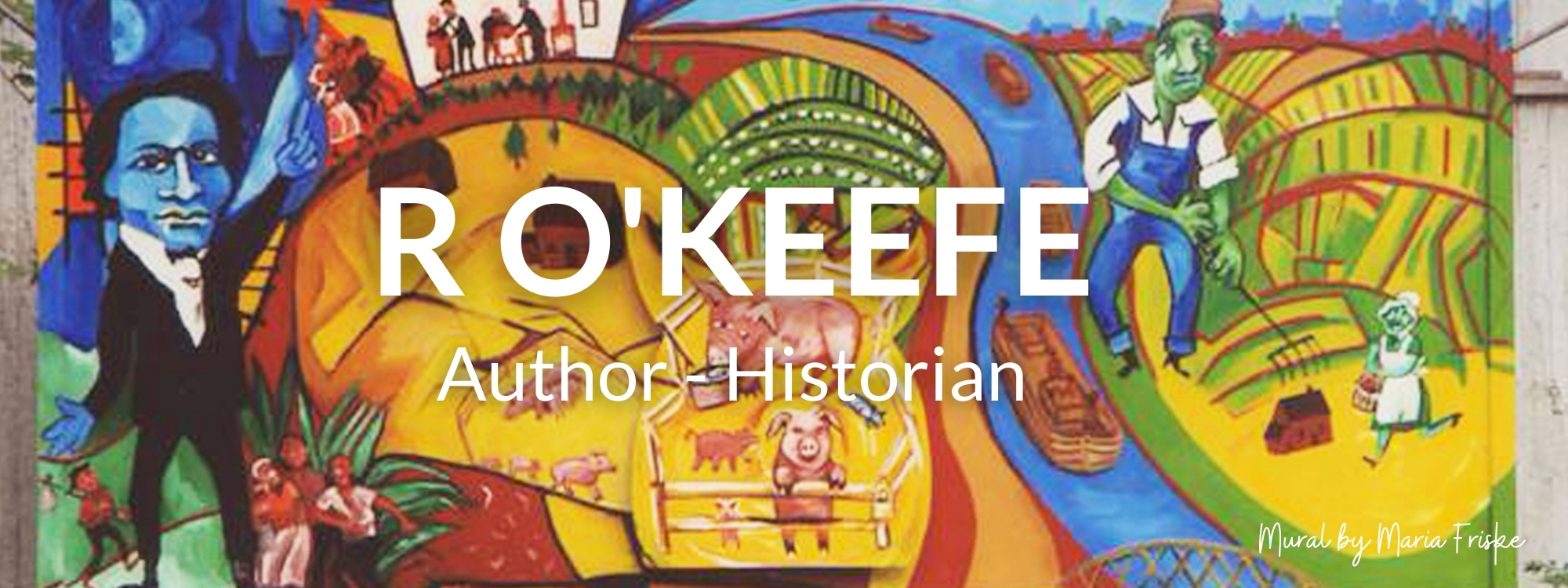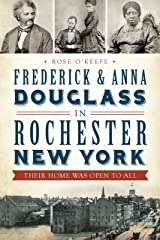Personal posts by public historian, Rose O'Keefe
The Lucky Ones
The notes at the back of Laurie Halse Anderson’s Fever 1793 (2000) caught my interest. In the story set in Philadelphia over the scorching summer of 1793, city residents scrambled for medical care and argued about best treatments. Those who succumbed quickly to yellow fever were the lucky ones.
Some doctors used a risky practice called blood-letting to drain fevered blood. Others preferred rest, fresh air and plenty of fluids (now recognized as the better choice.) The 14-year-old heroine lost neighbors, became separated from her mother, struggled with illness in the countryside and later, starvation in the city.
Cyrillic Writing
Thank you for another thoughtful picture spread, On Foot, of women farmers in Limpopo province, South Africa, with a photo credit to Siphiwe Sibeko of Reuters, in the Christian Science Monitor (April 25 & May 2). Thanks also to Melissa Mohr for the timely information on Cyrillic writing in her In A Word column. Mohr shared a concise history dating the script’s origins to the late 800s, and its getting named in honor of Cyril, one of two Christian missionaries. I learned that speakers in Eastern Orthodox Christian cultures like Bulgaria, Serbia, Russia and Ukraine kept the Cyrillic way of writing. Polish, Czech and Slovenian speakers who were mainly Roman Catholic changed to Latin script.
Catch Up
We may enjoy our set routines or loathe the daily grind. Either way, travel shakes up routines and I’m playing catch up. Why do I feel compelled to stay on top of all this reading? Because, when I find something fun or fabulous, it’s worth it.
Gifts
This from an email:
“Dear Contributors,
We are happy to announce that Volney Road Review, Issue 4.2, is now live. Being that this is the final issue the founding editors and I will be working on, we'd like to sincerely thank you for joining us on this journey. The literary scene is made of people like you, who take the risk to put their work out there. We would be nothing without your contribution.
You can find issue 4.2 on our site at https://volneyroadreview.com/2022/04/10/volume-4-issue-2/. We would greatly appreciate it if you'd also share it out to your friends and family--they would love to see your accomplishment.
Reconciliation
George became an owner/master through his wife, Martha, who ran the massive estate during his many absences. So how come it isn't called somewhere the George and Martha Washington estate?
Teamwork
Mixed Feelings
It was with mixed feelings that I finally finished The Story of Mankind (1921) by Hendrick Willem van Loon. He summed up all of history when he wrote, “… for us, who are alive today, the one and only serious problem is a world-wide reorganization along economic rather than political lines. … [In] the meantime we are learning one very important lesson – that the future belongs to the living and that the dead ought to mind their own business.”
Fitting Tributes
What a fitting tribute to Women’s History Month: The Sunday paper’s Special Edition of We Built This: How Women Innovators Shaped The World, was terrific! Thank you to USA Today Network, the Smithsonian and Funnel, for putting together this colorful collection of briefs about women leaders, scientists, artists and advocates. That’s what I like to read in the paper.
Uplifting
Oh my gosh! Thank you to the Christian Science Monitor (Mar. 14) for its touching two-page spread of a father-and-daughter reunion in Poland, after fleeing Ukraine in February. Also, although I’d read a biography of Beatrix Potter years ago, the piece in Books for Global Readers taught me about her fascination with mushrooms and fungi and belated credit for her work.
Catching Up
Having a nasty head cold put a crimp in my reading pace. Not only did I keep dozing off, but more often than not, I didn’t have much focus. One evening, I took out one of my favorite books, The Complete Tassajara Cookbook (2011) by Edward Espe Brown in search of a soup recipe.
Award Winners
Good Reading for Slow Times
Despite a head cold, I thoroughly enjoyed reading Accidental Archaeologists: True Stories of Unexpected Discoveries (2020) by Sarah Albee. It was so much fun. She is a clever writer and the book was a constant page turner with its fascinating facts. Have to admit, the Newbery Award winner, Tales from Silver Lands (1924) by Charles J. Finger, while also fascinating has been a slower read. The unusual stories told to the author by natives in South America stretched the mind and the imagination.
Once again, The Christian Science Monitor (Jan. 31, 2022) delivered timely takes on a variety of topics, from at-risk owls, unwelcome Eritrean refugees who moved to Toronto, a music program for expecting parents to create lullabies for their children, upbeat tidbits in Points of Progress and more. The two-page photo spread of a worker installing lights for the Year of the Tiger celebration in Taiwan was so colorful!
My latest blog post. https://rokeefehistory.com/blog
#amreading; #RochesterNY; #sarahalbee; #CharlesJFinger; #NewberyAward; #CSM;
The Beginning of the End
This is the third post about the Iroquois Peace League. My intention is to acknowledge and thank many for their efforts to understand pre-contact history across upstate New York State.
Educational author Lydia Bjornlund wrote in The Iroquois that they called themselves, We Human Beings, and the Europeans, Axemakers. These Human Beings began to ally with English traders in New England and the Dutch along the Hudson River in trade wars that were the beginning of the end of the Great Law of Peace.
More on the Peace League
This is the second post about the Iroquois Peace League. My intention is to acknowledge and thank many for their efforts to understand pre-contact history across upstate New York State.
Let’s continue with the Five Nations of the Haudenosaunee or Iroquois being well established by 1,000 A.D. and their democracy being one of the oldest continuing democracies in the world, from Alvin Josephy in 500 Nations. And, a historic marker in Clay, Onondaga County states: “The Onondagas had settlements in central New York that existed for several centuries before Columbus' arrival in 1492.”
The Great Law of Peace
This is the first post about the Iroquois Peace League. My intention is to acknowledge and thank many for their efforts to understand pre-contact history in New York State.
Let’s start with Mohawk historian Darren Bonaparte. In Creation and Confederation: The Living History of the Iroquois, he wrote of oral histories about the Five Nations uniting in the generations before the arrival of Europeans. Clues to the founding date exist in league traditions which evolved with retelling over time.
The American Dream
In a PBS news interview last week with Tiffanie Drayton, author of Black American Refugee (2022), she spoke of feeling betrayed by the myth of the American Dream that brought her family to the U.S. from Trinidad. After a rough time here, Drayton moved back home.
A few days after seeing that interview, I’ve was reminded in a Non Fiction Fest post on research, to take long-winded writing, underline and use only the best parts. I searched through my files for an essay to revise. How ironic. First up was “The American Dream” from 2013.
A Moment of Silence
Maybe it was the drums of war pounding in the ethernet that knocked me over. Maybe it was the intense cold front that came through, but when I thought about starting a blog post – which I enjoy – I binge watched short TrueFoodTV videos instead. FYI, pecan comes from a native word pakan. Pecahn, generally used in the southern U.S, is the French pronunciation. Peecan, as spoken in the northeast U.S, is the English version of this nut which has become very popular in China. I watched videos on permaculture projects in India – fascinating and uplifting, and a long one on an intentional living community, Eco Village at Ithaca, New York, that is soon to celebrate its 30th anniversary.
Character Quirk?
Why I get excited about lists could be a character quirk or defect. A list of 100 Newbery Award winners was too hard to resist and I decided to read through it. I started with the Hugh Lofting’s The Voyages of Doctor Doolittle (1922).
Talk about not judging a book by its cover, the paperback cover had a scene from the Disney movie with Rex Harrison in front of a giant snail, facing a native with feathers spiking out of his head, in an orange robe. The prologue was marvelous and by the time the good doctor appeared chapters into it, he was nothing like the book cover. Annoying. The story set in 1820s coastal England was fantastical and in parts, sweet. Yes, it was condescending at times but the adventures were so far out it was a ton of fun. That the doctor was a naturalist who was pro animal rights was a big surprise.
On Invizibilization
Working women, women of color, and enslaved workers’ worth has been downplayed for centuries. Scholar Celeste Marie Bernier coined the term “invisibilization” to describe how many people’s contributions have been erased from history.
Both Frederick Bailey and Anna Murray were born in rural Maryland in the early 1800s. They grew up with strict roles for men and women. Fred Bailey grew up enslaved in backwoods near Tuckahoe Creek on Maryland’s Eastern Shore. He went to Baltimore around age 8 as a babysitter for a young boy.
By the age of 17, Anna was a live-in servant in Baltimore. The two white families that she worked for thought well of her, and she became a respected cook, a status symbol.
By the time Frederick and Anna met in the 1830s, he had the indignity of turning over his wages as a skilled caulker to his master/owner, for a pittance of an allowance. Anna, despite being a free woman whose white employers valued her skills, was not well paid. I venture that her sister Charlotte, a dressmaker, helped her make the sailor suit Frederick wore as a disguise on his daring escape to New York City.



